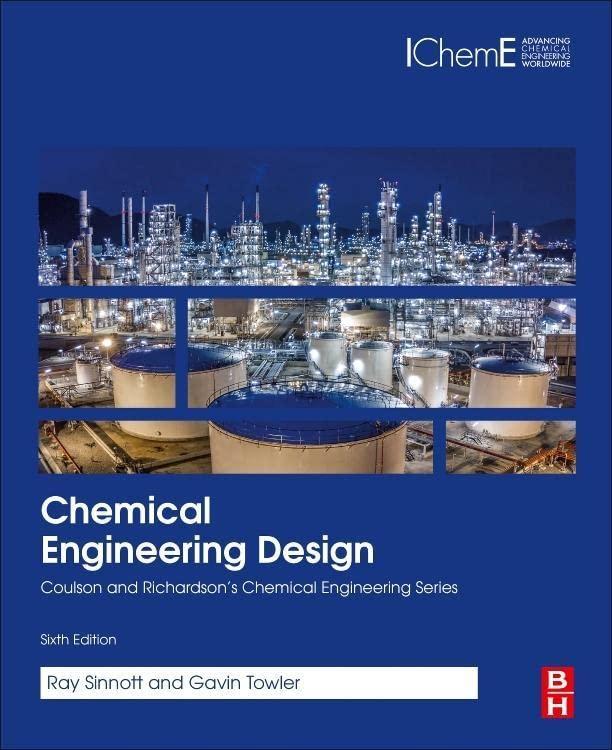This example provides more detail on the solution of the problem that was introduced as Example 1.1.
Question:
This example provides more detail on the solution of the problem that was introduced as Example 1.1. The original problem statement was to optimize the design of a distillation column to separate 225 metric tons per hour of an equimolar mixture of benzene, toluene, ethylbenzene, paraxylene and orthoxylene with minimum total annualized cost. The feed is a saturated liquid at 330 kPa. The recovery of toluene in the distillate should be greater than 99%, and the recovery of ethylbenzene in the bottoms should be greater than 99%.
In this example, a column simulation should be set up using a shortcut model. The shortcut model results will be used to initialize a rigorous model in the example that follows. Determine:
i) The minimum reflux ratio.
ii) The minimum number of trays.
iii) The actual number of trays when the reflux is 1.15 Rmin.
iv) The optimum feed trays.
Data from example 1.1
Optimize the design of a distillation column to separate 225 metric tons per hour of an equimolar mixture of benzene, toluene, ethylbenzene, paraxylene and Ortho xylene with minimum total annualized cost. The feed is a saturated liquid at 330 kPa. The recovery of toluene in the distillate should be greater than 99%, and the recovery of ethylbenzene in the bottoms should be greater than 99%.
Step by Step Answer:

Chemical Engineering Design
ISBN: 9780081025994
6th Edition
Authors: Ray Sinnott, R.K. Sinnott, Sinnott Gavin Towler





